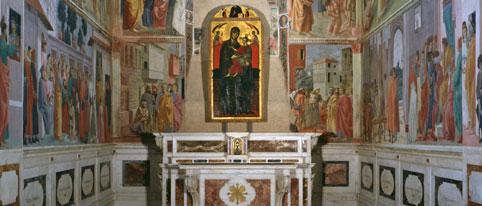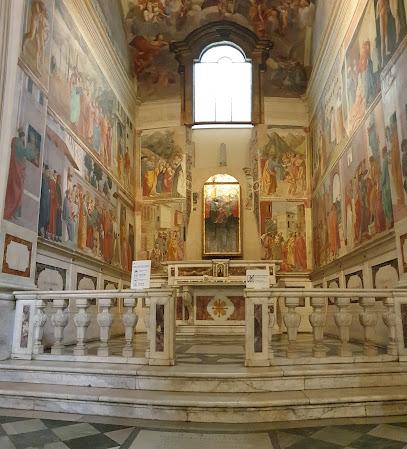A group of friars from Pisa founded the church of the Our Lady of Mount Carmel in Florence in 1268. Building began with the financial assistance of the Comune, or municipality, and of Florence's wealthiest familes, and continued until well after the consecration date (1422), being completed only in 1475. The west front of the church was never finished, and it continues to sport a rough stone and brick façade to this day.
Cappella Brancacci
Floransa
10AM–5PM
As the community gradually began to purchase the surrounding land, the complex started to grow with the construction of the convent proper. Building work began on the first cloister, the dorter, the frater, the chapter house and the infirmary in the late 13th century. Decoration of the new buildings proceeded apace between the 14th and 15th centuries, as shown by a series of frescoes either still in situ or since detached, and as the convent grew in importance, a number of lay fraternities made it their seat. In the 14th century it was raised to the level of Studium Generale, or university with the power to award degrees. St. Andrea Corsini (1301-1374) took his monastic vows here.
The church was altered in the 16th century when, like other churches in Florence, it was given a major overhaul to bring it into line with the precepts dictated by the Council of Trent. Working to orders from Duke Cosimo I, architect Giorgio Vasari removed the rood screen, placed the choir in the chancel and completely renewed the altars. This was followed by a major modernisation programme in the convent itself. The first cloister was renovated between 1597 and 1612, leading to the loss of Masaccio's celebrated fresco entitled La Sagra. This was followed by the erection of the second refectory, known as the Sala Vanni after the artist who painted the fresco decorating it (circa 1645), and of the new library.
Address
Piazza del Carmine, 14, 50124 Firenze FI, Italy


